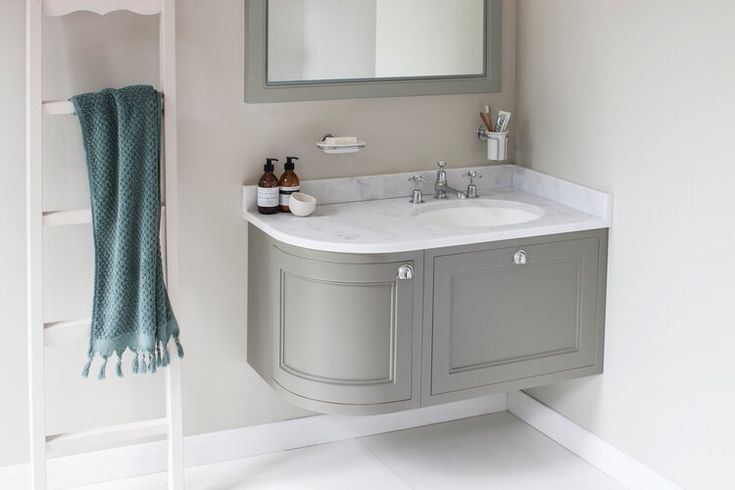
Small bathrooms often present unique challenges for homeowners and renovators alike. Fitting essential fixtures while maintaining comfort and efficiency requires careful planning. Even minor missteps in layout or furniture choices can make the space feel cramped. Making the right decisions from the beginning ensures both function and flow in a limited area.
Among the most important choices is selecting the ideal bathroom vanity unit to complement the available space. This fixture serves both a practical and visual purpose, often setting the tone for the entire room. A well-chosen model can provide the necessary storage, improve traffic flow, and enhance overall design. The following guide explores the most effective ways to select a vanity that meets the demands of a compact bathroom without sacrificing style or convenience.
Measure Twice Before You Buy
Getting accurate dimensions is the first step. Start by measuring the wall where the vanity will go, including height, width, and depth. Take note of any obstacles, such as pipes, doors, or windows, that could affect placement. Also, consider the space needed to move around comfortably. The unit must not block drawers, cabinets, or pathways. Taking the time to plan measurements avoids costly and frustrating mistakes later.
Prioritise Function Over Fancy
Compact spaces demand smart decisions. It’s easy to get drawn in by stylish fixtures, but function should come first. Think about how the vanity will be used and what essentials it must store. A model that includes under-sink cabinets, drawers, or shelves can make everyday routines smoother. Open shelving might look modern, but closed storage helps keep clutter hidden. Selecting a functional layout improves organisation without sacrificing style.
Mounting Style Matters
Two main options are available: floor-standing and wall-mounted units. Each has its advantages, especially in small areas. Wall-mounted versions create the illusion of more space by keeping the floor visible. They also offer easier access for cleaning. On the other hand, floor-standing options provide more storage and make the room feel more stable. The right choice depends on both layout and personal preference.
Choose Materials That Withstand Humidity
Bathrooms experience constant exposure to moisture and temperature shifts. For this reason, selecting the right materials is essential. The wrong choice may warp, peel, or deteriorate over time. Look for water-resistant finishes and materials that won’t absorb moisture easily. Common durable options include treated timber, laminate, and certain composites. These hold up well in a humid environment and extend the life of the furniture.
Consider Basin Types Carefully
The type of basin paired with the vanity makes a difference in both appearance and function. Some basins sit on top of the cabinet, while others are integrated into the surface. Top-mount basins offer more cabinet space underneath, while under-mount versions create a sleek, modern line. Integrated styles can save cleaning time by reducing grooves where grime collects. Matching the basin to the cabinet size and user needs ensures a better fit overall.
Light Colours Can Open Up the Room
Colour choices affect how large or small a room feels. Lighter shades tend to make a bathroom appear more spacious and inviting. This applies to both the cabinet and the wall paint. White, soft grey, and beige are popular choices for small bathrooms. They reflect light and pair well with mirrors and natural light. A lighter colour palette gives the impression of more space, even when floor area is limited.
Clever Storage Features to Look For
Storage is a high priority in compact rooms. Every centimetre counts, so selecting fittings that combine form and function can make a noticeable difference. Smart designs reduce mess and create a sense of calm, even in tight areas. Some features can help maximise utility:
- Pull-out drawers instead of swinging cabinet doors
- Vertical shelving that uses wall height
- Hidden compartments or sliding trays
- Built-in dividers for smaller items
- Narrow side storage for towels or toiletries
These additions reduce countertop clutter and make the room feel more organised. Investing in these smart features helps keep everything within reach without taking up extra space.
Don’t Forget Plumbing Considerations
Plumbing impacts more than just the location of the unit. Certain types of sinks and cabinets require specific pipe placements or adjustments. It’s important to choose a setup that works with existing plumbing or be prepared for modifications. Consulting with a plumber or installer before purchasing helps avoid compatibility issues. Changing plumbing positions adds cost and complexity. Sticking with a compatible design keeps the process smoother and budget-friendly.
Choosing the right bathroom vanity unit for a compact space involves more than appearance alone. Practical decisions lead to better use of space and greater satisfaction with the final result. Paying attention to layout, materials, storage, and plumbing ensures the selected unit enhances both function and style. With thoughtful planning, even a small bathroom can feel comfortable, tidy, and well-designed.
Read More – Studioghibliart



